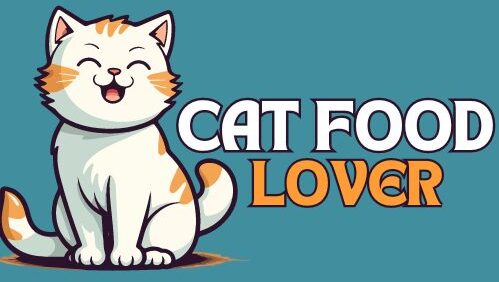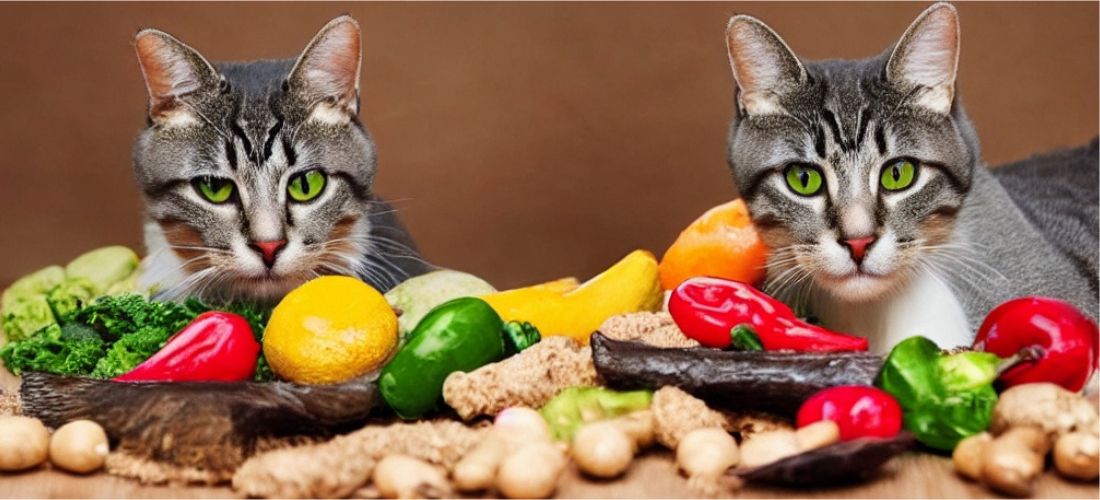This article provides a comprehensive guide to the best natural cat food options, covering healthy recipes and top grain-free brands. We’ll explore the unique nutritional needs of cats, how to decode cat food labels, and share homemade cat food recipes. Additionally, we’ll evaluate popular natural cat food brands and offer tips on transitioning your feline to a healthier diet. Whether you’re looking to improve your cat’s overall health or address specific dietary requirements, this guide will help you find the most natural and nutritious options for your beloved pet.
Key Takeaways
- Cats are obligate carnivores and require a diet primarily composed of animal-based proteins.
- Understanding how to read and interpret cat food labels is crucial for selecting high-quality, natural options.
- Homemade cat food recipes can be a nutritious and customizable option for pet owners.
- Evaluating popular natural cat food brands can help determine the best fit for your feline’s needs.
- Transitioning your cat to a healthier diet requires patience and gradual introduction of new foods.
Understanding Cats’ Nutritional Needs
To provide the best natural cat food, it’s essential to understand the unique nutritional needs of our feline friends. Cats are obligate carnivores, meaning they require a diet primarily composed of animal-based proteins. They have specific physiological requirements that differ from omnivorous species like humans and dogs.
Cats as Obligate Carnivores
As obligate carnivores, cats have evolved to thrive on a diet rich in high-quality, animal-based proteins. Unlike dogs and humans, who can derive nutrients from plant-based sources, cats rely on the essential amino acids, vitamins, and minerals found in meat, poultry, and fish. This specialized diet ensures that cats can meet their unique metabolic and energy needs.
Essential Nutrients for Feline Health
To maintain optimal health, cats require a balanced diet that includes the following essential nutrients:
- Protein:
- Cats need a high-protein diet, with animal-based proteins being the primary source. Protein is essential for muscle development, tissue repair, and overall bodily function.
- Fats:
- Healthy fats, such as those found in fish oil, provide a concentrated source of energy and support the absorption of fat-soluble vitamins.
- Vitamins and Minerals:
- Cats require a variety of vitamins and minerals, including taurine, vitamin A, vitamin B12, and zinc, to support their immune system, vision, and other vital processes.
- Water:
- Proper hydration is crucial for cats, as they have a low thirst drive and tend to obtain most of their water from their diet.
By understanding the unique nutritional needs of cats, pet owners can make informed choices when selecting the healthiest, most natural cat food to support their feline’s overall well-being.
Decoding Cat Food Labels
Navigating the pet food aisle can be overwhelming, with a multitude of options claiming to be natural or healthy. To ensure you select the best natural cat food, it’s crucial to understand how to read and interpret cat food labels. By identifying high-quality ingredients and avoiding harmful additives and preservatives, you can provide your feline friend with the nourishment they need to thrive.
Identifying High-Quality Ingredients
When it comes to natural cat food, the quality of the ingredients is paramount. Look for wet food, dry food, and pet food that feature animal-based proteins, such as tiki cat, as the primary source of nutrition. These proteins should be named specifically, such as “chicken” or “salmon,” rather than vague terms like “meat” or “fish.” Additionally, ensure the food contains essential vitamins, minerals, and taurine, which are crucial for maintaining your cat’s overall health and well-being.
Avoiding Harmful Additives and Preservatives
Steer clear of cat food that contains artificial colors, flavors, or preservatives, as these can be detrimental to your feline’s health. Instead, opt for natural, grain-free cat food options that are free from diarrhea-inducing ingredients and hydration-compromising fillers. Pay close attention to the ingredient list, avoiding brands that use purina or other synthetic additives that may cause food allergies or other health issues in indoor cats.
| Ingredient | Preferred Source | Reason |
|---|---|---|
| Protein | Animal-based (e.g., tiki cat, weruva) | Cats are obligate carnivores and require a diet rich in animal proteins to meet their nutritional needs. |
| Vitamins and Minerals | Natural, whole-food sources | Synthetic vitamins and minerals may not be as bioavailable or beneficial as those found in grain-free cat food and cat wet food. |
| Preservatives | Natural, such as mixed tocopherols | Artificial preservatives like BHA, BHT, and ethoxyquin can be harmful to cats and should be avoided. |
Homemade Cat Food Recipes
For pet owners who prefer a more hands-on approach, homemade cat food can be a natural and nutritious option for their feline friends. Cats are obligate carnivores, meaning they require a diet primarily composed of animal-based proteins to maintain their overall health and well-being. By preparing homemade meals, you can ensure your cat’s dietary needs are met with high-quality ingredients and essential vitamins and minerals.
Simple and Nutritious Wet Food Recipes
Creating wet food recipes for your cat can be a great way to improve their overall health and well-being. These recipes typically feature high-quality animal proteins, such as chicken, turkey, or fish, along with essential vitamins and minerals to support your cat’s optimal health and digestion. Here are a few simple and nutritious wet food recipes to consider:
- Chicken Liver Pâté: Combine 1 lb of chicken liver, 2 eggs, 1/4 cup of filtered water, and a pinch of sea salt. Blend until smooth and creamy, then divide into individual servings.
- Tuna and Sweet Potato Medley: Mix 1 can of tuna in water, 1 cooked and mashed sweet potato, 1 tbsp of coconut oil, and a sprinkle of ground turmeric. Serve warm or at room temperature.
- Beef and Vegetable Stew: Sauté 1 lb of ground beef with 1 cup of diced carrots, 1 cup of diced green beans, and 1/2 cup of water. Simmer until the vegetables are tender and the meat is cooked through.
Grain-Free Dry Food Options
For adult cats or those with digestive issues, a grain-free dry food can be a great option. These formulas are typically low in carbohydrates and high in animal-based proteins, which aligns with a cat’s natural dietary needs. When selecting a grain-free dry food, look for options that are high in protein, low in preservatives, and contain essential vitamins and minerals. Some popular grain-free dry food brands to consider include Natural Balance, Purina ONE, and Royal Canin.
It’s important to note that while homemade cat food can be a healthy and natural option, it’s crucial to ensure your recipes meet your cat’s nutritional requirements. Consult with your veterinarian or a feline nutritionist to ensure your homemade meals provide the appropriate balance of proteins, fats, and essential nutrients. Transitioning your cat to a new diet should also be done gradually to avoid any digestive issues.
Evaluating Popular Natural Cat Food Brands
With so many natural cat food brands on the market, it can be challenging to determine which one is the best fit for your feline. We’ll evaluate several popular natural cat food options, assessing their ingredient quality, nutritional profiles, and customer feedback. The discussion of food is also crucial, as the food should meet the standards set by the Association of American Feed Control Officials (AAFCO).
Choosing the Right Formula
When selecting a natural cat food brand, it’s important to look for formulas that are high in protein and low in carbohydrates. Cats are obligate carnivores, and their diet should primarily consist of animal-based proteins. Different brands offer various protein sources, and it’s important to choose one that aligns with your cat’s preferences and dietary needs.
Some popular natural cat food brands like Tiki Cat, Weruva, and Purina ONE are known for their high-protein and low-carbohydrate formulas, which can help support your cat’s optimal health. These brands also often include added vitamins and minerals to ensure your cat’s nutritional requirements are met.
It’s essential to consult with the American Feed Control Officials and review the ingredients and nutritional information to ensure the natural cat food you select is the best fit for your feline friend. By evaluating different brands and choosing the right formula, you can provide your cat with a natural, high-quality diet that supports their overall health and well-being.
FAQ
What makes a cat food “natural”?
Natural cat foods typically contain whole, minimally processed ingredients that are free from artificial additives, preservatives, and other synthetic components. They prioritize high-quality animal proteins, healthy fats, and essential vitamins and minerals to meet the unique nutritional needs of cats.
Why is it important to choose a natural diet for my cat?
Cats are obligate carnivores, meaning they require a diet that is high in animal-based proteins and low in carbohydrates. Natural cat foods closely mimic the feline’s ancestral diet, providing the necessary nutrients for optimal health, energy, and overall well-being.
How can I read and understand cat food labels?
When evaluating cat food labels, look for high-quality, whole-food ingredients like meat, poultry, or fish as the primary sources of protein. Avoid products with artificial preservatives, colors, or flavors. Additionally, check the guaranteed analysis to ensure the food is balanced and meets your cat’s nutritional requirements.
What are some homemade natural cat food options?
Homemade natural cat food recipes can be a great way to provide your feline with a balanced, high-protein diet. Some simple and nutritious wet food options include shredded chicken, pureed organ meats, and bone broth. For grain-free dry food, you can try recipes made with ingredients like dehydrated meat, healthy fats, and essential vitamins and minerals.
How do I transition my cat to a new natural food?
When transitioning your cat to a new natural food, it’s important to do so gradually to avoid digestive upset. Start by mixing a small amount of the new food with your cat’s current diet, slowly increasing the ratio over the course of 7-10 days. This allows your cat’s digestive system to adapt to the new formula.

